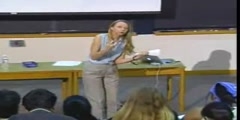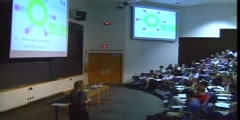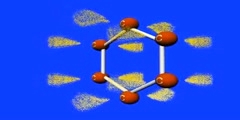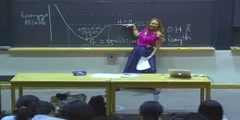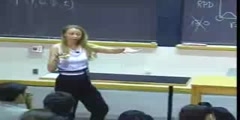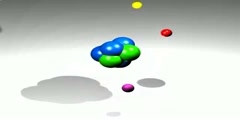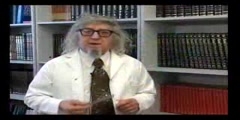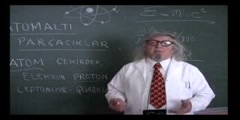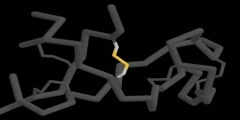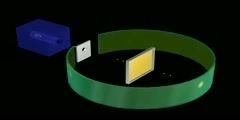Lec 12 - Overlap and Atom-Pair Bonds
"Lec 12 - Overlap and Atom-Pair Bonds" Freshman Organic Chemistry (CHEM 125) This lecture begins by applying the united-atom "plum-pudding" view of molecular orbitals, introduced in the previous lecture, to more complex molecules. It then introduces the more utilitarian concept of localized pairwise bonding between atoms. Formulating an atom-pair molecular orbital as the sum of atomic orbitals creates an electron difference density through the cross product that enters upon squaring a sum. This "overlap" term is the key to bonding. The hydrogen molecule is used to illustrate how close a simple sum of atomic orbitals comes to matching reality, especially when the atomic orbitals are allowed to hybridize. 00:00 - Chapter 1. The United-Atom "Plum-Pudding" View for Ethane and Methanol 13:24 - Chapter 2. The Orbital Shape of 1-Flouroethanol 19:37 - Chapter 3. Localized Pairwise Bonding Between Atoms and the Idea of Overlap 36:36 - Chapter 4. Hydrogen at Bonding Distance: A Case for Overlap Complete course materials are available at the Open Yale Courses website: http://open.yale.edu/courses This course was recorded in Fall 2008.
Video is embedded from external source so embedding is not available.
Video is embedded from external source so download is not available.
Channels: Chemistry (General)
Tags: Overlap LCAO normalization
Uploaded by: yalefreshorganic ( Send Message ) on 05-09-2012.
Duration: 50m 35s
Here is the next lecture for this course
Lec 13 - Overlap and Energy-Match
49:44 | 2520 viewsChemical Science - Hydrogen Atom Wavefunc ...
49:59 | 17633 viewsChemical Science - Lewis Diagrams - Lectu ...
45:49 | 12899 viewsChemical Science - Hybridization and Chem ...
51:30 | 19710 viewsUnderstanding Benzene Resonance with Pi-bonds
00:13 | 12245 viewsChemical Science - Hydrogen Atom - Lecture 6
47:24 | 23554 viewsChemical Science - Covalent Bonds - Lectu ...
47:12 | 14232 viewsLec 14 - Checking Hybridization Theory wi ...
47:36 | 2649 viewsA Lecture on P Orbitals
50:10 | 19967 viewsAtom
00:03 | 9336 viewsAtom animation in after effects
00:04 | 15940 viewsThe miracle in the atom 2
09:22 | 6989 viewsThe Miracle In The Atom 3
00:00 | 5663 viewsDisulfide Bonds
00:36 | 6854 viewsRutherford's Experiment: Nuclear Atom
00:47 | 44737 viewsNo content is added to this lecture.
This video is a part of a lecture series from of Yale
Lecture list for this course
Lec 2 - Force Laws, Lewis Structures and Resonance
Lec 3 - Double Minima, Earnshaw's Theorem and Plum-Puddings
Lec 4 - Coping with Smallness and Scanning Probe Microscopy
Lec 6 - Seeing Bonds by Electron Difference Density
Lec 7 - Quantum Mechanical Kinetic Energy
Lec 8 - One-Dimensional Wave Functions
Lec 9 - Chladni Figures and One-Electron Atoms
Lec 10 - Reality and the Orbital Approximation
Lec 11 - Orbital Correction and Plum-Pudding Molecules
Lec 13 - Overlap and Energy-Match
Lec 14 - Checking Hybridization Theory with XH_3
Lec 15 - Chemical Reactivity: SOMO, HOMO, and LUMO
Lec 16 - Recognizing Functional Groups
Lec 17 - Reaction Analogies and Carbonyl Reactivity
Lec 18 - Amide, Carboxylic Acid and Alkyl Lithium
Lec 19 - Oxygen and the Chemical Revolution (Beginning to 1789)
Lec 20 - Rise of the Atomic Theory (1790-1805)
Lec 21 - Berzelius to Liebig and Wöhler (1805-1832)
Lec 22 - Radical and Type Theories (1832-1850)
Lec 23 - Valence Theory and Constitutional Structure (1858)
Lec 24 - Determining Chemical Structure by Isomer Counting (1869)
Lec 25 - Models in 3D Space (1869-1877); Optical Isomers
Lec 26 - Van't Hoff's Tetrahedral Carbon and Chirality
Lec 27 - Communicating Molecular Structure in Diagrams and Words
Lec 28 - Stereochemical Nomenclature; Racemization and Resolution
Lec 29 - Preparing Single Enantiomers and the Mechanism of Optical Rotation
Lec 30 - Esomeprazole as an Example of Drug Testing and Usage
Lec 31 - Preparing Single Enantiomers and Conformational Energy
Lec 32 - Stereotopicity and Baeyer Strain Theory
Lec 33 - Conformational Energy and Molecular Mechanics
Lec 34 - Sharpless Oxidation Catalysts and the Conformation of Cycloalkanes
Lec 35 - Understanding Molecular Structure and Energy through Standard Bonds
Lec 36 - Bond Energies, the Boltzmann Factor and Entropy
Lec Last - Potential Energy Surfaces, Transition State Theory and Reaction Mechanism

